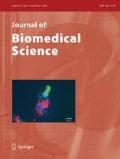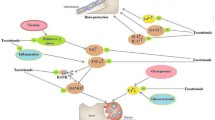Abstract
Information accumulated lately has confirmed the essentiality of vitamin E for humans and provided a better understanding of its biological function and metabolic fate. The discovery of α-tocopherol transfer protein, which preferentially binds to RRR-α-tocopherol, not only provides conclusive evidence of the essentiality of vitamin E for humans, but also sheds light on the superiority of RRR-α-tocopherol biologically over other isomers. The presence of tocopherol regeneration systems and multiple interdependent antioxidant systems is largely responsible for the lack of a widespread deficiency in humans and the difficulty to deplete vitamin E in the adult. The bulk of excess tocopherols consumed is excreted to feces unchanged or to urine with the side chain shortened but the chroman ring intact. The ability of dietary vitamin E to mediate mitochondrial superoxide generation affords a possible mode of action of vitamin E at the tissue levels. By decreasing the generation and/or the levels of reactive oxygen/nitrogen species, dietary vitamin E not only protects against oxidative damage, but also modulates the expression and/or activation of redox-sensitive biological response modifiers that regulate important cellular events.
Similar content being viewed by others
References
Arita M, Sato, Y, Miyata A, Tababe T, Takahashi E, Kayden HJ, Arai H, Inoue K. Human α-tocopherol transfer protein: Gene structure and chromosomal localization. Biochem J 305:437–443;1995.
Azzi A, Ricciarelli R, Zingg JM. Non-antioxidant molecular functions of alpha-tocopherol (vitamin E). FEBS Lett 519:8–10;2002.
Bieri JG, Farrell PM. Vitamin E. Vitam Horm 34:31–75;1976.
Burton GW, Traber MG. Vitamin E: Antioxidant activity, biokinetics, and bioavailability. Annu Rev Nutr 10:357–380;1990.
Byun MS, Jeon KI, Choi JW, Shim JY, Jue DM. Dual effect of oxidative stress on NF-kappakB activation in HeLa cells. Exp Mol Med 34:332–339;2002.
Chan AC, Tran K, Raynor T, Ganz PR, Chow CK. Regeneration of vitamin E in human platelets. J Biol Chem 266:17290–17295;1991.
Chiarugi P. Reactive oxygen species as mediators of cell adhesion. Ital J Biochem 52:28–32;2003.
Chiku S, Hamamura K, Nakamura T. Novel urinary metabolite of δ-tocopherol in rats. J Lipid Res 25:40–48;1984.
Chou AC, Broun GO, Fitch CD Jr. Abnormalities of iron metabolism and erythropoieses in vitamin E-deficient rabbits. Blood 52:187–195;1978.
Chow CK. Increased activity of pyruvate kinase in plasma of vitamin E-deficient rats. J Nutr 105:1221–1224;1975.
Chow CK. Biochemical responses in the lungs of ozone-tolerant rats. Nature 260:721–722;1976.
Chow CK. Nutritional influence in cellular antioxidant defense systems. Am J Clin Nutr 32:1066–1081;1979.
Chow CK. Vitamin E and blood. World Rev Nutr Diet 45:133–166;1985.
Chow CK. Vitamin E and oxidative stress. Free Radic Biol Med 11:215–232;1991.
Chow CK. Vitamin E. In: Rucker RB, Suttie JW, McCormick DB, Machlin LJ, eds. Handbook of Vitamins, ed 3. New York, Marcel Dekker, 165–197;2001.
Chow CK. Vitamin E regulation of mitochondrial superoxide. Biol Signals Recept 10:112–124;2001.
Chow CK, Tappel AL. An enzymatic protective mechanism against lipid peroxidation damage to lungs of ozone-exposed rats. Lipids 7:518–524;1972.
Chow CK, Reddy K, Tappel AL. Effect of dietary vitamin E on the activities of glutathione peroxidase system in rat tissue. J Nutr 103:618–624;1973.
Chow CK, Draper HH, Csallany AS, Chiu M. The metabolism of14C-α-tocopheryl quinone and14C-α-tocopheryl hydroquinone. Lipids 2:390–396;1967.
Chow CK, Ibrahim W, Wei Z, Chan AC. Vitamin E regulates mitochondrial hydrogen peroxide generation. Free Radic Biol Med 27:580–587;1999.
Clarke R, Armitage J. Antioxidant vitamins and risk of cardiovascular disease: Review of large-scale randomised trials. Cardiovasc Drugs Ther 16:411–415;2002.
Diliberto E Jr, Dean G, Carter C, Allen PL. Tissue, subcellular, and submitochondrial distributions of semidehydroascorbate reductase: Possible role of semidehydroascorbate reductase in cofactor regeneration. J Neurochem 39:563–568;1982.
Draper HH, Csallany A. Metabolism and function of vitamin E. Fed Proc 28:1690–1695;1969.
Evans HM, Bishop KS. On the existence of a hitherto unrecognized dietary factor essential for reproduction. Science 56:650–651;1922.
Finkel T. Oxidant signals and oxidative stress. Curr Opin Cell Biol 5:247–254;2003.
Fraga CG, Oteiza PI. Iron toxicity and antioxidant nutrients. Toxicology 180:23–32;2002.
Freeman BA, Crapo JD. Biology of disease: Free radicals and tissue injury. Lab Invest 47:412–426;1982.
Gabsi S, Gouider-Khouja N, Belal S, Fki M, Kefi M, Turki I, Ben-Hamida M, Kayden H, Mebazaa R, Hentati F. Effect of vitamin E supplementation in patients with ataxia with vitamin E deficiency. Eur J Neurol 8:477–481;2001.
Gutteridge JM. Iron promoters of the Fenton reaction and lipid peroxidation can be released from hemoglobin by peroxide. FEBS Lett 201:291–295;1986.
Haddad JJ. Antioxidant and prooxidant mechanisms in the regulation of redox(y)-sensitive transcription factors. Cell Signal 14:879–897;2002.
Halliwell B. Oxidants and human disease: Some new concepts. FASEB J 1:358–364;1987.
Harmon EM, Witting LA, Horwitt MK. Relative rates of depletion of alpha-tocopherol and linoleic acid after feeding polyunsaturated fats. Am J Clin Nutr 18:243–248;1966.
Hayashi T, Kanetoshi A, Nakamura M, Tamura M, Shirahama H. Reduction of alpha-to-copherolquinone to alpha-tocopherolhydroquinone in rat hepatocytes. Biochem Pharmacol 44:489–493;1992.
Hentati A, Deng HX, Hung WY, Nayer M, Ahmed MG, He X, Tim R, Stumpf DA, Siddique T. Human alpha-tocopherol transfer protein: Gene structure and mutations in familial vitamin E deficiency. Ann Neurol 39:295–300;1996.
Ibrahim W, Chow CK. Unpublished results.
Ibrahim WH, Bhagavan HN, Chopra RK, Chow CK. Dietary coenzyme Q10 and vitamin E alter the status of these compounds in rat tissues and mitochondria. J Nutr 130:2343–2348;2000.
Imai H, Nakagawa Y. Biological significance of phospholipid hydroperoxide glutathione peroxidase (PHGPx, GPx4) in mammalian cells. Free Radic Biol Med 34:145–169;2003.
Jialal I, Traber M, Devaraj S. Is there a vitamin E paradox? Curr Opin Lipidol 12:49–53;2001.
Kakhlon O, Ioav Cabantchik Z. The labile iron pool: Characterization, measurement, and participation in cellular processes. Free Radic Biol Med 33:1037–1046;2002.
Kamal-Eldin A, Appelqvist LA. The chemistry and antioxidant properties of tocopherols and tocotrienols. Lipids 31:671–701;1996.
Kayden HJ, Traber MG. Absorption, lipoprotein transport, and regulation of plasma concentrations of vitamin E in humans. J Lipid Res 34:343–358;1993.
Keyer K, Imlay JA. Superoxide accelerates DNA damage by elevating free iron levels. Proc Natl Acad Sci USA 93:13635–13640;1996.
Kline K, Lawson KA, Yu W, Sanders BG. Vitamin E and breast cancer prevention: Current status and future potential. J Mammary Gland Biol Neoplasia 8:91–102;2003.
Kohlschütter A, Hübner C, Jansen W, Lindner SG. A treatable familial neuromyopathy with vitamin E deficiency, normal absorption, and evidence of increased consumption of vitamin E. J Inherit Metab Dis 11:149–152;1988.
Lass A, Sohal RS. Effect of coenzyme Q(10) and alpha-tocopherol content of mitochondria on the production of superoxide anion radicals. FASEB J 14:87–94;2000.
Lee PJ, Choi AM. Pathways of cell signaling in hyperoxia. Free Radic Biol Med 35:341–350;2003.
Manson JE, Bassuk SS, Stampfer MJ. Does vitamin E supplementation prevent cardiovascular events? J Womens Health (Larchmt) 12:123–136;2003.
Meagher EA. Treatment of atherosclerosis in the new millennium: Is there a role for vitamin E? Prev Cardiol 6:85–90;2003.
Minotti G. Sources and role of iron in lipid peroxidation. Chem Res Toxicol 6:134–146;1993.
Minotti G, Aust SD. The requirement for iron (III) in the initiation of lipid peroxidation by iron (II) and hydrogen peroxide. J Biol Chem 262:1098–1104;1987.
Niki E, Tsuchiya J, Tanimura R, Kamiya Y. Regeneration of vitamin E from alpha-chromanoxy radical by glutathione and vitamin C. Chem Lett 6:789–792;1982.
O'Donnell VB. Free radicals and lipid signaling in endothelial cells. Antioxid Redox Signal 5:195–200;2003.
Quahchi K, Arita M, Kayden HJ, Hentati F, Hamida MB, Sokol R, Arai H, Inoue K, Mandel IL, Koenig M. Ataxia with isolated vitamin E deficiency is caused by mutation in the α-tocopherol transfer protein. Nat Genet 9:141–145;1995.
Packer JE, Slater TF, Wilson RL. Direct observation of a free radical interaction between vitamin E and vitamin C. Nature 278:737–738;1979.
Pfeilschifter J, Eberhardt W, Huwiler A. Nitric oxide and mechanisms of redox signaling. J Am Soc Nephrol 14 (8 suppl 3):S237-S240;2003.
Poli G, Albano E, Biasi F, Cecchini G, Carini R, Bellomo G, Dianzani MU. Lipid peroxidation stimulated by carbon tetrachloride or iron and hepatocyte death: Protective effect of vitamin E. Eur J Biochem 59:449–455;1975.
Rimbach G, Minihane AM, Majewicz J, Fischer A, Pallauf J, Virgli F, Weinberg PD. Regulation of cell signalling by vitamin E. Proc Nutr Soc 61:415–425;2002.
Schultz M, Leist M, Petrzika M, Gassmann B, Brigelius-Flohe R. Novel urinary metabolite of α-tocopherol, 2,5,7,8-tetramethyl-2(2′-carboxyethyl)-6-hydroxychroman, as an indicator of an adequate vitamin E supply? Am J Clin Nutr 62(6 Suppl):1527S-1534S;1995.
Scott ML. Studies on vitamin E and related factors in nutrition and metabolism. In: DeLuca HF, Suttie JW, eds. The Fat-Soluble Vitamins. Madison, University of Wisconsin Press, 355–368; 1969.
Simon EJ, Eisengart A, Sundheim L, Milhorat AT. The metabolism of vitamin E. II. Purification and characterization of urinary metabolites of α-tocopherol. J Biol Chem 221:807–817;1956.
Smith P, Tappel AL, Chow CK. Glutathione peroxidase activity as a function of dietary selenomethionine. Nature 247:392–393;1974.
Sokol RJ. Vitamin E deficiency and neurological disease. Annu Rev Nutr 8:351–373;1988.
Squadrito GL, Pryor WA. Oxidative chemistry of nitric oxide: The roles of superoxide, peroxynitrite, and carbon dioxide. Free Radic Biol Med 25:392–403;1998.
Sung L, Greenberg ML, Koren G, Tomlinson GA, Tong A, Malkin D, Feldman BM. Vitamin E: E: The evidence for multiple roles in cancer. Nutr Cancer 46:1–14;2003.
Tappel AL. Will antioxidant nutrients slow aging process? Geriatrics 23:97–105;1968.
Tasinato A, Boscoboinik D, Bartoli GM, Maroni P, Azzi A.d-Alpha-tocopherol inhibition of vascular smooth muscle cell proliferation occurs at physiological concentrations, correlates with protein kinase C inhibition, and is independent of its antioxidant properties. Proc Natl Acad Sci USA 92:12190–12194;1995.
Thomas PK, Cooper JM, King RH, Workman JM, Schapira AH, Sampson MA, Muller DP: Myopathy in vitamin E deficient rats: Muscle fiber necrosis associated with disturbances of mitochondrial function. J Anat 183:451–461;1993.
Touyz RM. Recent advances in intracellular signalling in hypertension. Curr Opin Nephrol Hypertens 12:165–174;2003.
Traber MG. Determinations of plasma vitamin E concentrations. Free Radic Biol Med 16:229–239;1994.
Traber MG, Kayden HJ. Preferential incorporation of α-tocopherol vs. γ-tocopherol in human lipoproteins. Am J Clin Nutr 49:517–526;1989.
Traber MG, Packer L. Vitamin E: Beyond antioxidant function. Am J Clin Nutr 62(6 Suppl):1501S-1509S;1995.
Traber MG, Burton GW, Ingold KU, Kayden HJ. RRR-and SRR-α-tocopherols are secreted without discrimination in human chylomicrons, but RRR-α-tocopherol is preferentially secreted in very low density lipoproteins. J Lipid Res 31:675–685;1990.
Traber MG, Sokol RJ, Kohlschütter A, Kayden HJ. Impaired discrimination between stereoisomers of α-tocopherol in patients with familial isolated vitamin E deficiency. J Lipid Res 34:201–210;1993.
Upston JM, Kritharides L, Stocker R. The role of vitamin E in atherosclerosis. Prog Lipid Res 42:405–422;2003.
Ursini F, Maiorino M, Gregolin C. The selenoenzyme phospholipid hydroperoxide glutathione peroxidase. Biochim Biophys Acta 839:62–70;1985.
Wechter WJ, Kantoci D, Murry ED Jr, D'Amico DC, Jung ME, Wang WH. A new endogenous natriuretic factor: LLU-α. Proc Natl Acad Sci USA 93:6002–6007;1996.
Weiser H, Vecchi M. Stereoisomers of α-to-copheryl acetate. II. Biopotencies of all eight stereoisomers, individually or in mixtures, as determined by rat resorption-gestation tests. Int J Vitam Nutr Res 52:351–370;1982.
Weiser H, Vecchi M, Schlachter M. Stereoisomers of alpha-tocopheryl acetate. IV. USP units and alpha-tocopherol equivalents of allrac-, 2-ambo- and RRR-alpha-tocopherol evaluated by simultaneous determination of resorption-gestation, myopathy and liver storage capacity in rats. Int J Vitam Nutr Res 56:45–56;1986.
Welch KD, Davis TZ, Van Eden ME, Aust SD. Deleterious iron-mediated oxidation of biomolecules. Free Radic Biol Med 32:577–583;2002.
Yu BP. Cellular defense against damage from reactive oxygen species. Physiol Rev 74:139–162;1994.
Author information
Authors and Affiliations
Rights and permissions
About this article
Cite this article
Kuang Chow, C. Biological functions and metabolic fate of vitamin E revisited. J Biomed Sci 11, 295–302 (2004). https://doi.org/10.1007/BF02254433
Received:
Accepted:
Issue Date:
DOI: https://doi.org/10.1007/BF02254433




